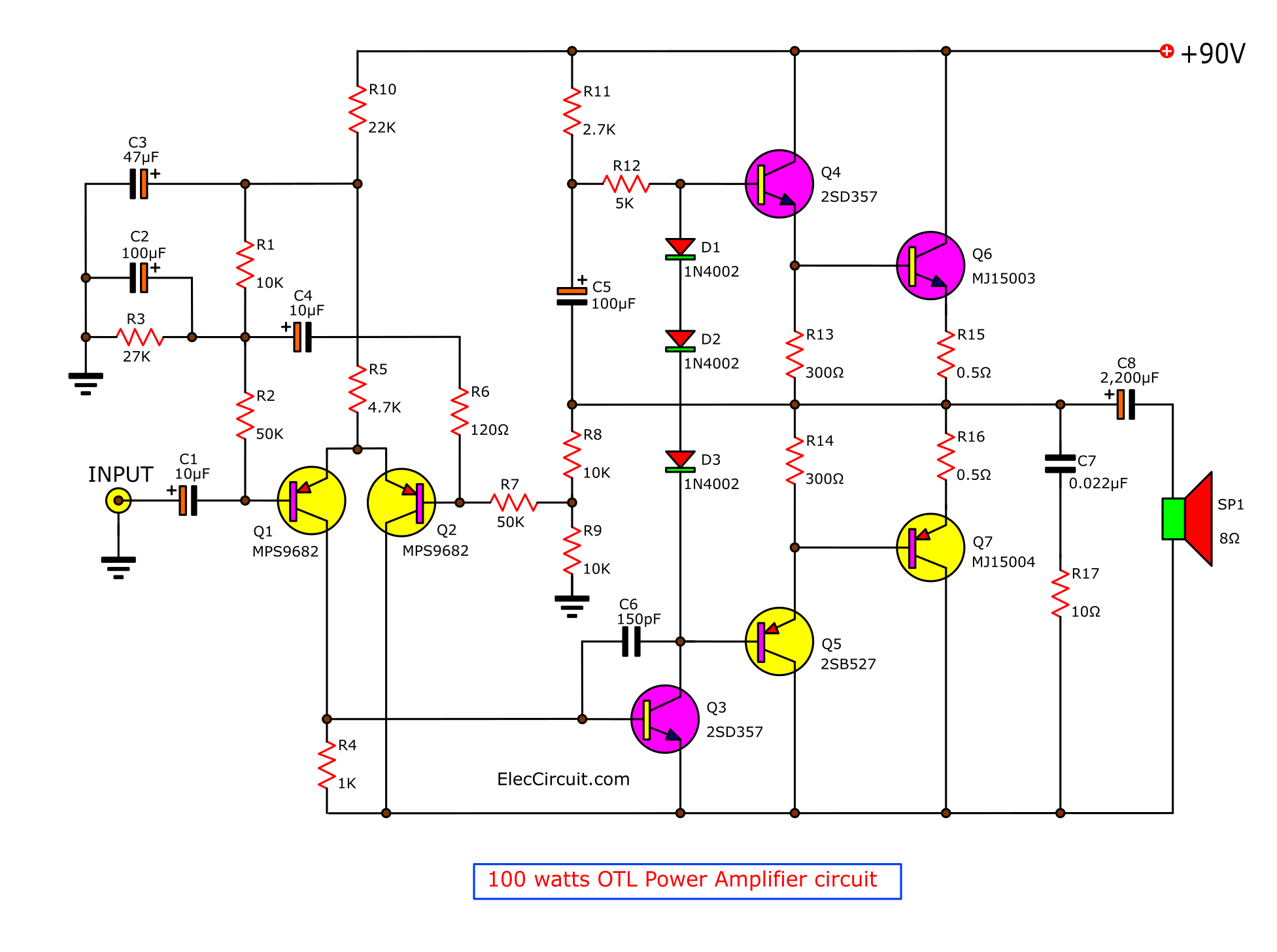Transistor Circuit Diagram

Transistor circuit diagram
A transistor is a miniature semiconductor that regulates or controls current or voltage flow in addition amplifying and generating these electrical signals and acting as a switch/gate for them. Typically, transistors consist of three layers, or terminals, of a semiconductor material, each of which can carry a current.
What are the 3 circuits of a typical transistor?
The three different transistor circuit configurations are: common emitter, common base and common collector (emitter follower), these three circuit configurations have different characteristics and one type will be chosen for a circuit dependent upon what is required.
How do you use a transistor in a circuit?
Because if we put a load here then that means our current has to flow. Through the base resistor.
What is a NPN transistor in a circuit?
NPN transistors are a type of bipolar transistor with three layers that are used for signal amplification. It is a device that is controlled by the current. A negative-positive-negative transistor is denoted by the abbreviation NPN.
What is transistor function?
transistor, semiconductor device for amplifying, controlling, and generating electrical signals. Transistors are the active components of integrated circuits, or “microchips,” which often contain billions of these minuscule devices etched into their shiny surfaces.
What is the principle of transistor?
Well, the very basic working principle of a transistor is based on controlling the flow of current through one channel by varying intensity of a very smaller current that is flowing through a second channel. Also Read: Transistor as a Switch. Transistor as Amplifier.
Why NPN transistor is mostly used?
Generally the NPN transistor is the most used type of bipolar transistors because the mobility of electrons is higher than the mobility of holes. The NPN transistor has three terminals – emitter, base and collector. The NPN transistor is mostly used for amplifying and switching the signals.
Which transistor is mostly used?
The MOSFET is by far the most widely used transistor for both digital circuits as well as analog circuits, accounting for 99.9% of all transistors in the world. The bipolar junction transistor (BJT) was previously the most commonly used transistor during the 1950s to 1960s.
What is the use of NPN and PNP?
NPN transistors are used as a sink to the current i.e., current flows to the Collector. It means the current points inwards. PNP transistors are used as a source to the current i.e., current flows out of the Collector.
What is difference between PNP and NPN?
PNP switches On by a low signal whereas NPN switches ON by a high signal. As we are aware that in PNP transistor, the P represents the polarity of the emitter terminal and N represents the polarity of the base terminal.
What is type of transistor?
Transistors are broadly divided into three types: bipolar transistors (bipolar junction transistors: BJTs), field-effect transistors (FETs), and insulated-gate bipolar transistors (IGBTs).
What is base current?
Base current is typically 1% of emitter or collector current for small signal transistors. Most of the emitter electrons diffuse right through the thin base (c) into the base-collector depletion region. Note the polarity of the depletion region surrounding the electron at (d).
Why is called transistor?
The word transistor is a combination of transfer and resistance. This is because it transfers the resistance from one end of the device to the other end or we can say, transfer of resistance. Hence, the name transistor.
What are the 2 main functions of a transistor?
A transistor is a semiconductor device, usually made out of silicon or germanium, used to amplify or attenuate the strength of the electric current in electronic circuits. Transistors have two basic functions: to amplify electric current or to block its passage.
Why are transistors important?
Transistors transformed the world of electronics and had a huge impact on computer design. Transistors made of semiconductors replaced tubes in the construction of computers. By replacing bulky and unreliable vacuum tubes with transistors, computers could now perform the same functions, using less power and space.
Does transistor work on AC or DC?
A transistor audio amplifier for example is an AC signal amplifier, since the microphone generally generates an AC output. And here is a point that many people confuse: Transistors are NOT AC components: Transistors can only operate with DC signals!
Where are transistors used?
Transistors are used in our day-to-day lives in many forms, which we are aware of as amplifiers and switching apparatuses. As amplifiers, they are being used in various oscillators, modulators, detectors and nearly any circuit to perform a function. In a digital circuit, transistors are used as switches.
What is transistor in simple words?
Definition of transistor 1 : a solid-state electronic device that is used to control the flow of electricity in electronic equipment and usually consists of a small block of a semiconductor (such as germanium) with at least three electrodes. 2 : a transistorized radio.
Why is NPN faster than PNP?
Explanation: The majority carriers of charge in an n-p-n transistor are electrons, whereas, in a p-n-p transistor majority of charge carriers are holes. The mobility of electrons is more than that of holes because the holes have more effective mass than the effective mass of electrons.
Where is NPN used?
NPN transistors are used in some classic amplifier circuits, the same as 'push-pull' amplifier circuits. NPN transistors are used in temperature sensors. NPN transistors are used in very High-frequency applications. NPN transistors are used in logarithmic converters.









Post a Comment for "Transistor Circuit Diagram"